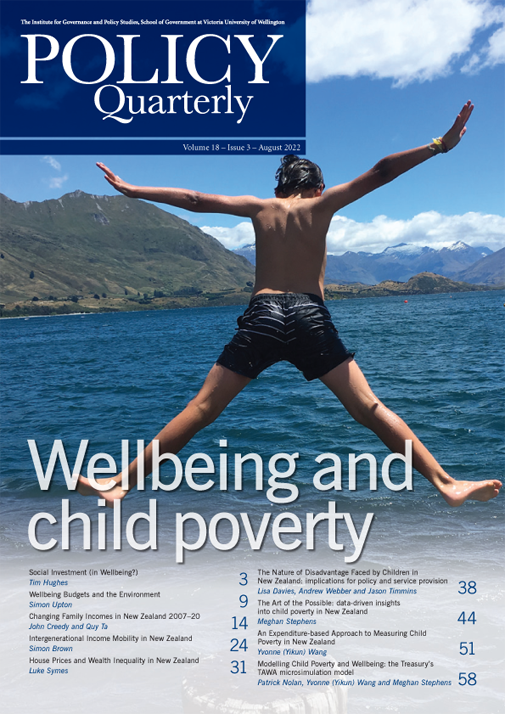Changing Family Incomes in New Zealand 2007–20
DOI:
https://doi.org/10.26686/pq.v18i3.7711Keywords:
Income dynamics, Income distribution, Low income, MobilityAbstract
This article describes income mobility patterns in New Zealand over the short to medium term. It uses a special dataset which tracks the Household Labour Force Survey over the period from 2007 to 2020, using 2013 census data. The measure of income is total family taxable income per adult equivalent person. The income unit is the individual. Just below half of those initially in the bottom decile remained either there or in the second-lowest decile over seven years, while about two-thirds of those initially in the top decile remained either there or in the second-highest decile. Income mobility was least for those in the top and bottom deciles. People also move below or above a low-income threshold over time. Of those who initially had incomes less than half of the median income per adult equivalent person, about half remained in that category after six to seven years. Unemployment and single parenthood were closely associated with longer-term low income. Policies that promote employment and education may be effective, yet not necessarily sufficient, in reducing low income and low-income persistence.
Downloads
Downloads
Published
Issue
Section
License
Permission: In the interest of promoting debate and wider dissemination, the IGPS encourages use of all or part of the articles appearing in PQ, where there is no element of commercial gain. Appropriate acknowledgement of both author and source should be made in all cases. Please direct requests for permission to reprint articles from this publication to Policy-Quarterly@vuw.ac.nz.



